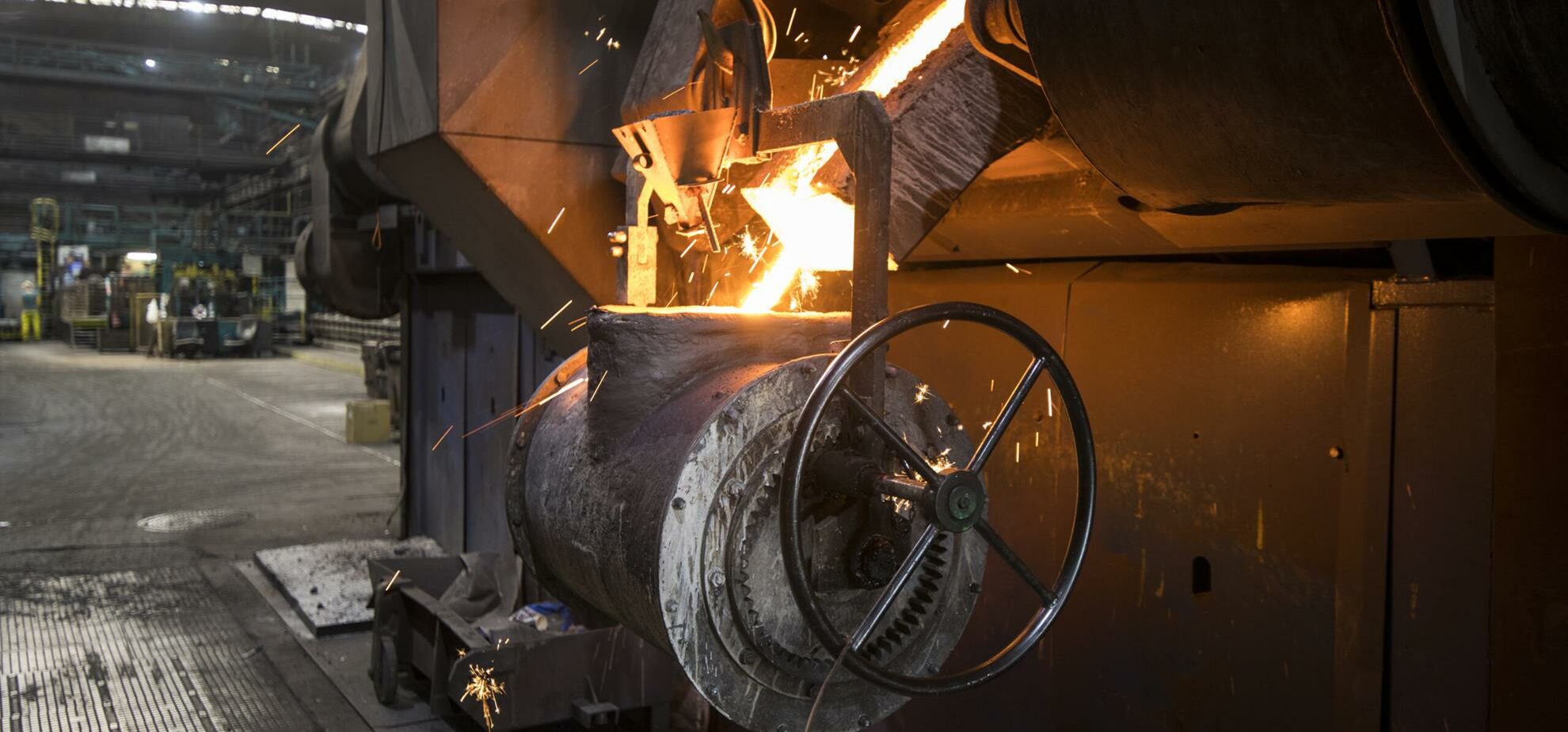In the world of engineering, materials play a vital role in determining the success and durability of structures and components. One material that has stood the test of time and gained huge popularity is ductile iron. Its unique combination of strength, ductility and versatility has made it a popular choice for a wide range of applications in various industries.
| ČSN | DIN EN 1561 | DIN EN 1691 | Rm min (MPa) | HB max (Tvrdost dle Brinella) |
|---|---|---|---|---|
| 42 2305 | EN-GJS-500-7 | GGG 50 | 500 | 230 |
The production of ductile iron begins by melting pig and scrap iron along with small amounts of other elements such as carbon, silicon and magnesium in a furnace. The tapping temperature of the molten metal lies between 1480 °C and 1540 °C. The molten metal is then treated with magnesium, which promotes the formation of graphite nodules during solidification. The result is a material that exhibits excellent strength, durability and machinability.
The use of ductile iron covers a wide range of industries. In the automotive industry, it is used in engine blocks, transmission components and steering systems. In the construction industry, ductile iron is used for pipes, valves, fittings and manhole covers due to its corrosion resistance and long service life. Due to its exceptional strength and fatigue resistance, it is also used in the manufacture of machinery, agricultural equipment and even in the manufacture of wind turbine components.
Kujná litina, známá také jako tvárná litina, je typem slitiny železa a uhlíku, která ve srovnání s tradiční šedou litinou nabízí vynikající mechanické vlastnosti. Vyznačuje se vysokou pevností, vynikající tažností a odolností proti nárazu, díky čemuž je vhodná do náročných technických prostředí. Klíč k výjimečným vlastnostem tvárné litiny spočívá v její mikrostruktuře, která se skládá z grafitových uzlíků uložených v matrici z feritu a perlitu.
Tensile strength
One of the most significant advantages of ductile iron is its high tensile strength. Its yield strength is several times higher than that of standard gray cast iron, which allows it to withstand high loads and pressures without permanent deformation. This strength makes ductile iron an ideal material for components subjected to dynamic forces such as gears, crankshafts and heavy machinery components.
Ductility
In addition, ductile iron exhibits remarkable ductility, which allows it to deform in tension without breaking. This property makes it an ideal material for components subject to cyclic loading, such as crankshafts, gears and suspension components. Its ability to absorb shock and vibration is especially valuable in applications where safety and reliability are critical.
Endurance
In addition to mechanical properties, ductile iron has excellent resistance to wear and heat dissipation. Thanks to these properties, it is suitable for use at high temperatures and abrasive conditions. For example, ductile iron is widely used in the automotive industry for the production of engine components, exhaust pipes and brake components.
Versatility
The versatility of ductile iron also extends to its machinability and weldability. It can be easily machined into complex shapes, enabling complex designs and precision manufacturing. This material also shows good weldability, which allows the production of large structures and the repair of damaged parts.
When it comes to casting materials, few can match the remarkable properties and versatility of ductile iron. Foundry GIFF a.s. casts ductile iron in quality ČSN 42 23 05 eq (GGG50). As for liquid metal, we produce it in EGES medium-frequency induction furnaces with a capacity of 2×6 tons.
You might also be interested in:

